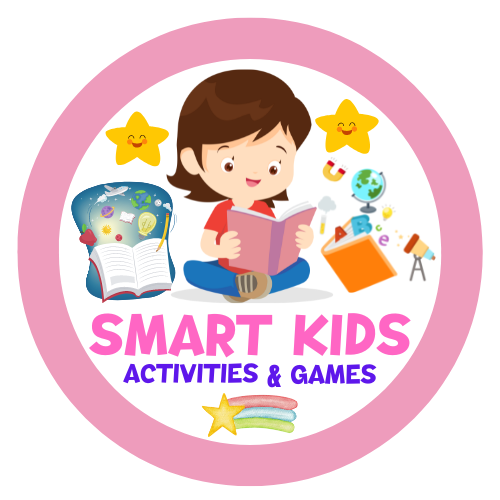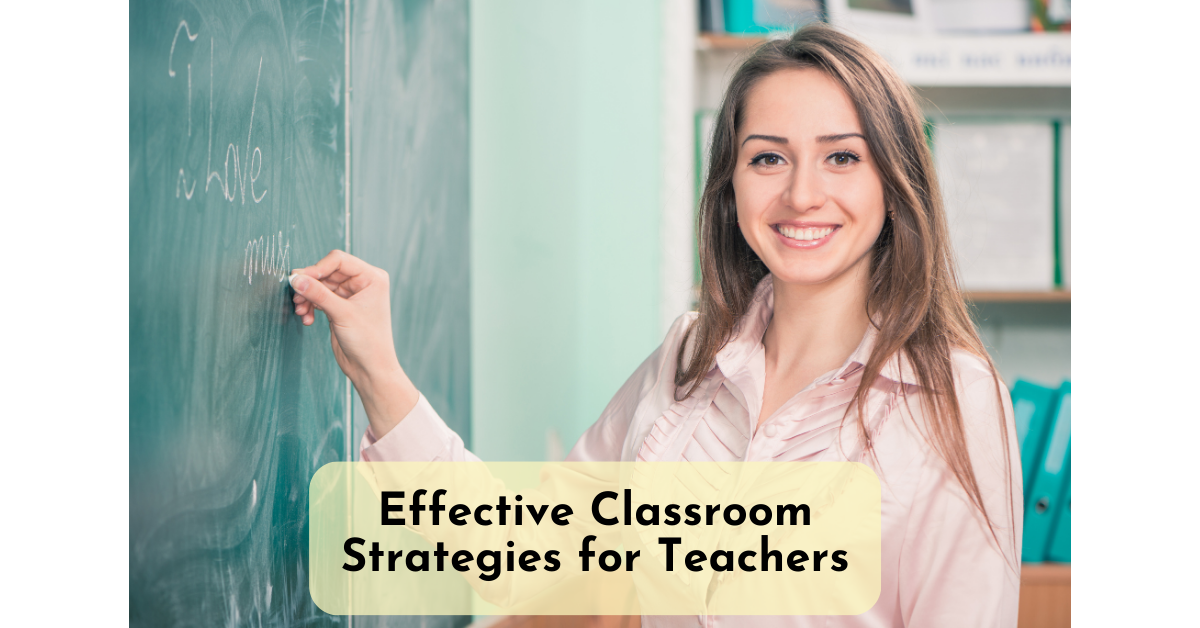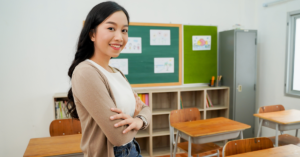Key Takeaways:
- Effective teaching strategies foster effective communication and differentiated instruction.
- Creating a positive learning environment promotes student motivation and engagement.
- Technology integration enhances student engagement and prepares them for the digital age.
- Assessment and feedback help monitor student progress and identify learning gaps.
- Continual professional development is crucial for staying updated on effective classroom strategies.
Classroom Management Strategies
Teachers often face challenges when it comes to managing their classrooms effectively. Without proper strategies in place, students may become disengaged, leading to a negative learning environment. In order to create a positive and productive classroom, teachers need to implement various management techniques. Here are some key strategies that can help:- Model Ideal Behavior: Teachers play a crucial role in setting the tone and expectations in the classroom. By modeling ideal behavior, such as respect, kindness, and active listening, teachers can establish a positive example for students to follow.
- Encourage Initiative: Students thrive when they are empowered to take initiative and have ownership of their learning. Teachers can foster a culture of initiative by providing opportunities for student-led projects, setting goals, and encouraging creativity.
- Avoid Collective Punishment: Instead of using collective punishment, where the whole class is punished for the actions of a few, it is important for teachers to address individual behavior issues privately. This helps maintain fairness and encourages responsible behavior among students.
“A positive classroom environment is essential for fostering student success. By implementing classroom management strategies that promote a positive atmosphere, teachers can create an optimal learning environment for all students.” – Mary Johnson, Education Expert
| Benefits of Effective Classroom Management Strategies | Examples |
|---|---|
| Improved student behavior | Model ideal behavior through consistent actions and positive reinforcement. |
| Enhanced student engagement | Encourage student initiative by providing opportunities for hands-on activities and group discussions. |
| Promotion of a positive learning environment | Avoid collective punishment and instead address behavior issues on an individual basis. |
| Increased academic achievement | Implement clear expectations and provide structured routines to help students stay focused and on task. |
Flexible Seating
Flexible seating is an innovative strategy that promotes student engagement and enhances learning by addressing the auditory, visual, and tactile systems of students. This approach involves providing students with various seating options in the classroom that cater to their individual learning goals and preferences. By allowing students to choose from options such as bean bags, standing desks, and floor cushions, teachers create a dynamic and adaptable learning environment that fosters focus, creativity, and collaboration.Benefits of Flexible Seating
Flexible seating offers multiple benefits to both students and teachers:- Promotes student engagement: By giving students the freedom to select their preferred seating options, flexible seating empowers them to take ownership of their learning experience, leading to increased motivation and participation.
- Enhances sensory experiences: The integration of auditory, visual, and tactile systems through flexible seating allows students to engage with the learning material in a more holistic and immersive manner, promoting deeper comprehension and retention.
- Encourages collaboration and communication: Configuring the classroom with flexible seating arrangements facilitates student interaction and collaboration, fostering effective communication skills and supporting the development of critical social-emotional competencies.
“Flexible seating allows students to personalize their learning environment, which positively impacts their comfort and overall well-being in the classroom.”
Implementing Flexible Seating
When implementing flexible seating, teachers should consider the following guidelines:- Establish clear expectations: Communicate the purpose and guidelines of flexible seating to students, emphasizing the importance of respect, responsibility, and collaboration.
- Create a variety of seating options: Provide a range of seating options that cater to different student preferences and learning needs, ensuring a balanced mix of comfort, functionality, and versatility.
- Set seating guidelines: Explain how seating choices should align with students’ learning goals, encouraging them to choose seating options that support their focus and participation during different activities.
- Model flexibility: As the teacher, model flexibility by adapting and adjusting your teaching methods and classroom layout to accommodate different learning styles and student preferences.
| Seating Option | Benefits |
|---|---|
| Bean bags | – Provides a cozy and relaxed seating option |
| Standing desks | – Encourages movement and helps students stay energized |
| Floor cushions | – Offers a comfortable seating choice for group work or independent reading |
| Balance balls | – Engages core muscles and promotes active sitting, improving focus |
Webb’s Depth of Knowledge
Norman Webb’s Depth of Knowledge (DoK) is a framework that categorizes different levels of thinking in the classroom. It provides teachers with a guide to effectively assess and promote higher-order thinking skills in their students. The four levels of DoK are:- Recollection and Reproduction: This level focuses on basic recall and the ability to reproduce information. Students demonstrate their understanding by recalling facts, definitions, or simple procedures.
- Knowledge Application: At this level, students apply their knowledge to solve problems or complete tasks. They demonstrate their understanding by using acquired knowledge in different contexts.
- Strategic Thinking: This level requires students to think more critically and strategically. They analyze and evaluate information to make informed decisions or solve complex problems.
- Extended Critical Thinking: The highest level of DoK challenges students to think deeply and critically. They engage in abstract reasoning, analyze multiple perspectives, and create new insights or solutions.
“Webb’s Depth of Knowledge framework provides teachers with a valuable tool to scaffold and guide students towards higher levels of thinking. By incorporating activities and assessments that promote strategic thinking and extended critical thinking, educators can effectively prepare students for real-world challenges.”
Sample DoK Activity
To demonstrate how teachers can incorporate Webb’s Depth of Knowledge in their lessons, consider the following activity:| Level of Thinking | Activity |
|---|---|
| Recollection and Reproduction | Students create flashcards to review key vocabulary terms from a recent lesson and quiz each other on the definitions. |
| Knowledge Application | Students analyze a case study and apply their knowledge of ethical principles to propose appropriate solutions. |
| Strategic Thinking | Students participate in a Socratic seminar discussing a complex social issue. They critically analyze different viewpoints and construct arguments based on evidence. |
| Extended Critical Thinking | Students conduct independent research on a scientific topic and present their findings along with a novel hypothesis that pushes the boundaries of current knowledge. |
Summative Assessment
Summative assessments play a vital role in evaluating student understanding at the end of a unit or course. While there are criticisms surrounding their inability to fully capture the learning process, they offer significant benefits to both students and teachers. These assessments serve as valuable tools to motivate students, encourage active participation, and identify any learning gaps that may exist within the classroom. One common form of summative assessment is the end-of-unit test, which allows students to demonstrate their knowledge and mastery of the material covered throughout the unit. These tests are designed to assess the overall understanding of the subject matter and provide a comprehensive evaluation. Final projects are another example of summative assessments that allow students to showcase their learning in a creative and engaging way. These projects provide students with the opportunity to apply their knowledge and skills to real-world scenarios, fostering a deeper understanding of the subject matter. In addition to end-of-unit tests and final projects, standardized tests are often used as summative assessments to measure student performance against predetermined benchmarks. These tests provide a standardized measure of proficiency and can help identify areas where additional support or intervention may be needed. One of the key benefits of summative assessments is their ability to motivate students. Knowing that their knowledge and understanding will be assessed can incentivize students to pay closer attention, engage with the material, and apply their learning in meaningful ways. Furthermore, summative assessments allow teachers to identify learning gaps and areas for improvement. By analyzing the results, teachers can gain valuable insights into the students’ understanding of the material and adjust their instruction accordingly. This enables teachers to provide targeted interventions and support to address any areas of weakness and promote overall student success. “Summative assessments provide an opportunity to consolidate learning and reflect on the progress made throughout a unit or course. They not only motivate students to apply their knowledge but also enable teachers to support and guide them towards achieving their learning goals.” While the limitations of summative assessments are acknowledged, their role in evaluating student understanding and informing instructional decisions cannot be overlooked. By incorporating a variety of summative assessment methods, educators can effectively gauge student learning, enhance teaching practices, and promote overall academic excellence.| Benefits of Summative Assessment |
|---|
| 1. Motivates students |
| 2. Provides a comprehensive evaluation |
| 3. Allows students to showcase their learning through final projects |
| 4. Offers standardized measures of proficiency |
| 5. Identifies learning gaps and areas for improvement |
Formative Assessment
Formative assessments play a crucial role in the teaching process by providing ongoing evaluation and feedback on student learning. These assessments allow teachers to make necessary adjustments to their instruction and help students actively engage in their own learning. By incorporating formative assessment techniques into the classroom, teachers can create a dynamic and responsive learning environment.Think-Pair-Share
One effective formative assessment technique is think-pair-share. This strategy encourages active student participation and collaboration. Students are given a question or prompt to consider individually (think), then discuss their thoughts with a partner (pair), and finally share their ideas with the whole class (share). This process allows students to deepen their understanding through dialogue and peer interaction.Entry and Exit Tickets
Another useful formative assessment tool is the use of entry and exit tickets. At the beginning of a lesson or unit, entry tickets provide a quick snapshot of students’ prior knowledge and misconceptions. This information helps teachers tailor their instruction to address specific student needs. Similarly, exit tickets assess student understanding and allow teachers to gauge the effectiveness of their instruction. In both cases, entry and exit tickets offer valuable insights into student comprehension and guide instructional decision-making.Self-Evaluation Techniques
Self-evaluation techniques empower students to reflect on their own learning and take ownership of their progress. Examples of self-evaluation techniques include self-assessments, learning journals, and goal setting. By regularly evaluating their own work and setting personal goals, students become active participants in the learning process. This metacognitive practice promotes self-regulation and motivates students to strive for continuous improvement.| Formative Assessment Techniques | Description |
|---|---|
| Think-Pair-Share | Encourages student collaboration and critical thinking through individual reflection, partner discussion, and whole-class sharing. |
| Entry and Exit Tickets | Provides quick snapshots of students’ prior knowledge and understanding at the beginning and end of a lesson or unit. |
| Self-Evaluation Techniques | Empowers students to reflect on their own learning, set goals, and take ownership of their progress. |
Active Learning
Active learning strategies are effective methods that promote student engagement and shift the focus from passive listening to active participation in the classroom. By incorporating active learning techniques, teachers can create a dynamic and stimulating environment that encourages students to take responsibility for their own learning. One active learning strategy is reciprocal questioning. This technique involves students formulating questions to ask their peers or the whole class. It not only enhances critical thinking skills but also encourages collaboration and communication among students. By actively engaging in reciprocal questioning, students become active contributors to the learning process. Another valuable active learning strategy is the pause procedure. This technique involves incorporating regular breaks during a lesson for students to reflect, discuss, and solve problems. These pauses provide students with the opportunity to process information, reinforce their understanding, and make connections to the content being taught. The pause procedure promotes deeper learning and fosters a more interactive and engaging classroom environment. The muddiest point is yet another effective active learning strategy. This technique encourages students to identify the most confusing or unclear concept or topic from a lesson. By pinpointing their “muddiest point,” students actively reflect on their understanding and seek clarification. This strategy not only helps students recognize their areas of difficulty but also allows teachers to address their specific learning needs more effectively. Active learning strategies, such as reciprocal questioning, the pause procedure, and the muddiest point, empower students to become active participants in their own education. By engaging students in these interactive methods, teachers can foster a more collaborative, dynamic, and enriching learning experience.“Active learning engages students in the learning process, encouraging them to become active contributors to their education.”
| Active Learning Strategies | Benefits |
|---|---|
| Reciprocal questioning | – Enhances critical thinking skills – Promotes collaboration and communication – Encourages active participation |
| Pause procedure | – Reinforces understanding – Promotes deeper learning – Fosters an interactive classroom environment |
| Muddiest point | – Identifies areas of difficulty – Promotes reflection and clarification – Tailors instruction to specific learning needs |
Differentiated Instruction
Differentiated instruction is a highly effective teaching strategy that recognizes and caters to the diverse learning styles of students. It involves adjusting both the content and processes of instruction to meet the unique needs and preferences of each individual learner. By embracing differentiated instruction, teachers create an inclusive classroom environment that fosters engagement, increases student motivation, and enhances overall learning outcomes. One of the key aspects of differentiated instruction is acknowledging that students have different learning styles. Some students may thrive in a visual learning environment, while others may be more auditory or kinesthetic learners. By incorporating various learning stations into the classroom, such as hands-on activities, interactive technology, and visual aids, teachers can cater to different learning preferences and provide a well-rounded learning experience for all students. Another effective technique used in differentiated instruction is the think-pair-share strategy. This strategy encourages active participation and collaboration among students. It involves students reflecting on a question or topic individually, then discussing their thoughts with a partner before sharing them with the whole class. Think-pair-share not only allows students to develop their own ideas, but also promotes critical thinking, communication skills, and the ability to consider different perspectives. In conclusion, differentiated instruction is an invaluable teaching approach that recognizes and embraces the diverse learning styles of students. By creating learning stations and implementing think-pair-share activities, teachers can provide personalized learning experiences that cater to the unique needs of each student. Through differentiated instruction, educators can foster an inclusive and engaging classroom environment that promotes academic growth, motivates students, and enhances overall learning outcomes.FAQ
How can a teacher be effective in the classroom?
To be an effective teacher, it is important to constantly update teaching strategies, incorporate new technologies, and engage in professional development opportunities.
What are some effective teaching strategies?
Effective teaching strategies include differentiated instruction, collaborative learning, instructional technology integration, and active learning strategies that promote student engagement.
What are some classroom management techniques?
Classroom management techniques involve creating a positive learning environment, modeling ideal behavior, encouraging student initiative, and avoiding collective punishment.
How can a teacher promote student engagement?
Student engagement can be promoted through strategies such as flexible seating, integrating auditory, visual, and tactile systems, and using active learning strategies like reciprocal questioning, the pause procedure, and identifying the muddiest point.
How can a teacher provide effective communication in the classroom?
Effective communication in the classroom can be achieved through techniques like differentiated instruction, using learning stations, and encouraging think-pair-share activities.
What is differentiated instruction?
Differentiated instruction is a teaching strategy that involves adjusting content and processes to meet the diverse learning styles of students, providing unique learning experiences.
What are some assessment and feedback methods in the classroom?
Assessment and feedback methods include summative assessments such as end-of-unit tests and formative assessments like think-pair-share, entry and exit tickets, and self-evaluation techniques.
How can a teacher create a positive learning environment?
A positive learning environment can be created by modeling ideal behavior, encouraging student initiative, avoiding collective punishment, and incorporating flexible seating options.
What strategies can a teacher use to promote student motivation?
Strategies to promote student motivation include active learning strategies, differentiated instruction, and using instructional technologies that align with student interests and needs.
How can collaborative learning benefit students?
Collaborative learning benefits students by promoting teamwork, critical thinking skills, and the ability to listen and communicate effectively with their peers.
How can instructional technology be effectively integrated into the classroom?
Instructional technology can be effectively integrated into the classroom by using interactive multimedia, online resources, and digital tools that enhance student learning and engagement.
Download free activities and teaching resources Click Here
You may also be interested in
AI in Kids Education: Trends & Benefits
The Importance of Teacher-Student Relationships
Handling Difficult Student Behavior: 10 Tips & Strategies
The Importance of Parent-Teacher Collaboration
Navigating the Teacher-Student Relationship Dynamics
Effective Strategies for Teaching Student Success
Source Links
- https://www.structural-learning.com/post/teaching-and-learning-strategies-a-classroom-guide
- https://www.prodigygame.com/main-en/blog/teaching-strategies/
- https://thirdspacelearning.com/us/blog/teaching-strategies/






